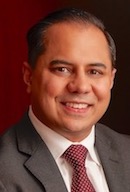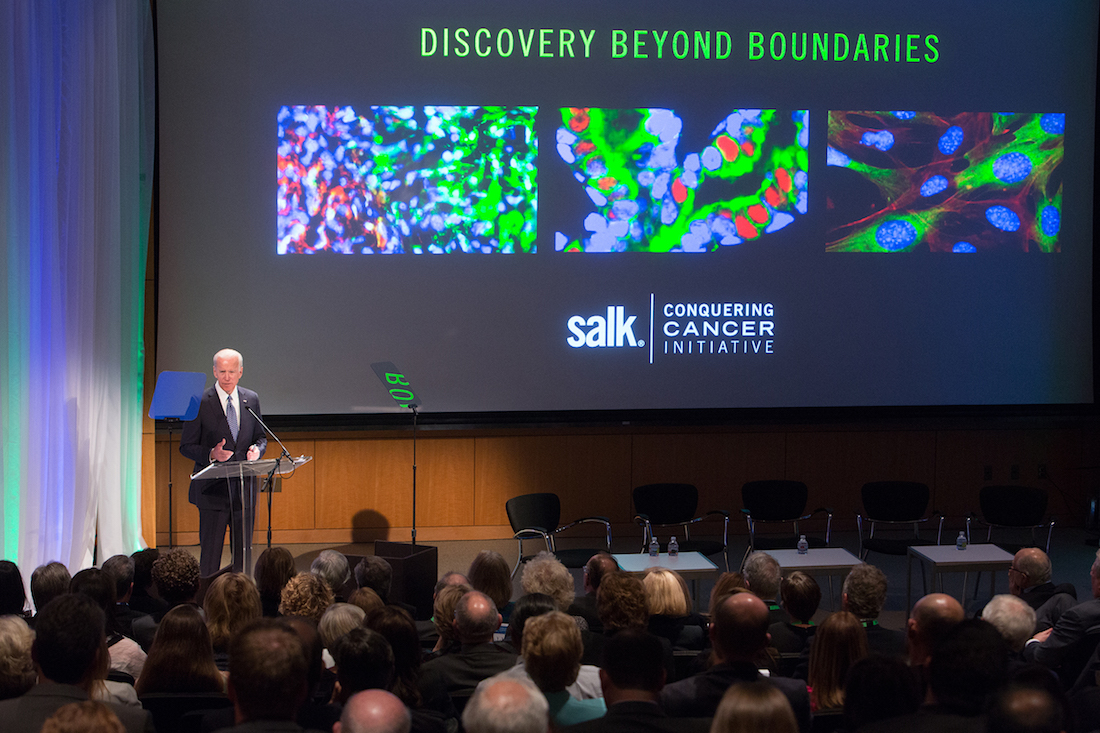Daily Business Report-April 12, 2018
Construction crews are beginning foundation work for a bridge that will carry high-speed trains over Garces Highway in Kern County. (Photo credit: California High Speed Rail Authority)
California Bullet Train
Colliding With Reality
By Dan Walters | CALmatters columnist
Reality may finally be catching up with the vision – or pipedream — of a 200-mile-per-hour train connecting California’s northern and southern regions.
A few weeks ago, the High-Speed Rail Authority released its latest “business plan” that was supposed to tell Californians how the brief stretch of track now being constructed in the San Joaquin Valley can grow into a system stretching from San Francisco and Sacramento in the north to Los Angeles and San Diego in the south.
While the latest version of the plan, drafted by the latest of several management teams, appears to be more realistic about cost and construction schedules than its predecessors, it’s still sorely deficient, as its official reviewers pointed out last week during a legislative hearing.
After a decade-plus of cogitation, they said, the state still doesn’t have a complete scenario for raising the tens of billions of dollars it would take to extend the San Joaquin section into the San Francisco Bay Area via San Jose and southward to Los Angeles.
The plan suggests that the northward extension, which is the first priority, might be built with a bond issue backed by the project’s dedicated share of revenues from the state’s “cap-and-trade” auctions of greenhouse gas emission allowances.
And then, it continues, there would be an operable segment that would generate revenues from riders that could be used to finance the southward extension.
However, the plan contains caveats for the scheme to work, such as extending cap-and-trade from its current end date, 2030, to 2050, and offering lenders some guarantees to back up the notoriously volatile emission auctions.
The reviewers look somewhat askance at such a scheme.
Louis Thompson, one of the nation’s top rail system experts who chairs the project’s official “peer review” committee, sees “little prospect” that fares from the first extension could finance the second. He told legislators that the project, a favorite of Gov. Jerry Brown, is “at a critical point when difficult decisions need to be made,” and cited the need for a “credible long-term plan to finance the system.”
The Legislature’s budget analyst offered a similarly skeptical view of the business plan in its review.
Legislative Analyst Mac Taylor’s staff said there are multiple “issues” such as potentially higher costs than the current $77.3 billion estimate (twice what voters were told in 2008 when they passed a $9.95 billion bond issue), “significant uncertainties” about the bond issue proposal and finally, the lack of a “complete funding plan.”
The review concluded, “It is crucial for the high-speed rail project to have a complete and viable funding plan (and) at this time, no such funding plan exists.
There’s probably enough money to complete the 119-mile San Joaquin Valley stretch, which can be used for Amtrak service, and money is being spent to improve commuter service both in the Bay Area and in Southern California.
After that, the finances are very dicey, and it would be foolhardy to begin any extension without, as the business plan analysts say, a complete and viable financing plan. And if such a plan can’t be produced, we should call it quits on a project that was never grounded in reality.
CALmatters is a public interest journalism venture committed to explaining how California’s state Capitol works and why it matters. For more stories by Dan Walters, click here.
___________________
USD Economic Index Forecasts Strong
San Diego Economy Through 2018
Times of San Diego
The University of San Diego’s economic index set a record high for the second month in a row in February, forecasting continued economic growth through the end of the year. The index of leading economic indicators compiled by the Burnham-Moores Center for Real Estate rose 0.7 percent in February. It was the 16th consecutive increase in the index.
“There is no change from the previously reported outlook for the local economy: positive growth in the economy at least through the end of 2018,” wrote Alan Gin, associate professor of economics, in the report.
Measures of help-wanted advertising, initial claims for unemployment insurance, the outlook for the national economy, building permits and consumer confidence were all positive. The only negative component in the index was a decline in local stock prices amid the general sell-off on Wall Street.
But the report included some cautions about the future. “While the short-term continues to look bright, both the local and national economies have to deal the long-run problem of shrinking employment opportunities due to improvements in technology,” wrote Gin.
“The Internet has reduced the need for employees in banks, travel agencies, retailing, and other industries,” he noted. “Automation has already had a big impact on manufacturing employment and may impact industries such as restaurants, retailing, and transportation.”
Gin said the long-term question for both the local and national economy is whether technological change will lead to new opportunities as has always been the case in the past.
___________________
Sand Nourishment Projects Aim to
Preserve California’s Iconic Sandy Beaches
Scripps News
New research is shedding light on how mechanically placed sand on San Diego County beaches moves and its potential impacts. The study, published in the journal Coastal Engineering, could help planners develop beach nourishment projects that will reach their intended goals without causing unintended problems. North San Diego County for instance is planning a 50-yearm $160 million series of beach nourishments intended to combat flooding and erosion, and provide recreational space for tourists.
The new study, conducted by researchers at Scripps Institution of Oceanography and funded in part by California Sea Grant, analyzed four beach nourishment projects in San Diego County to see how they fared in the years after the nourishment. It provides a better understanding of how nourishment sand moves in response to waves and currents, which could provide insight for more effective beach nourishment projects in the future.
Read more…
___________________
Clinithink Helps Achieve World Record
Title for Fastest Genetic Diagnosis
Laboratory News
Clinical data specialists Clinithink have helped to achieve a Guinness World Record title for the fastest genetic diagnosis. The project successfully compressed the time needed to diagnose rare genetic disorders in newborns through DNA sequencing to 19.5 hours, setting a new title. The company participated in the project with Rady Children’s Institute of Genomic Medicine in San Diego and its partners, including Alexion, Illumina, Edico Genome and Diploid.
Sarah Beeby SVP, of life sciences at Clinithink said: “Not only did this exciting project prove the value of our technology, the humbling reality is that this work can help save the lives of children with rare diseases.”
Clinithink’s CLiX natural language processing solution was needed for two key activities in the process: quickly combing through electronic medical records to extract crucial phenotype information to then compare with over 12,000 phenotypes describing the characteristics of thousands of rare diseases. The solution can perform both of these tasks in seconds compared to the hours or days it would take a highly skilled specialist physician to do.
Narrative data is a valuable asset in health care but is largely inaccessible due to its lack of structure as existing technologies rely on structured data or key word searches. CLiX can ‘read’ thousands of clinical documents an hour and extract the information they contain.
___________________
Human Longevity and FirefighterAid
Partner to Explore Early Disease Detection
Human Longevity Inc. anounced a partnership with San Diego-based FirefighterAid, a nonprofit organization dedicated to caring for firefighters and their families, to screen 100 San Diego city fire rescue firefighters to demonstrate the benefit of early, advanced screening in high-risk populations. The firefighters will be screened through HLI’s Health Nucleus X research protocol which combines whole genome sequencing with advanced MRI imaging, paired with core cardiac testing including CT scan and heart rhythm monitoring.
Up to 100 San Diego Firefighters and 10 alternates will be selected to participate in HNX screening and assessment through a lottery process managed by FirefighterAid and organized by age.
___________________
CaseyGerry Attorney Selected
for AAJ’s Leadership Academy

CaseyGerry attorney Srinivas Hanumadass has been selected to participate in the 2018 American Association for Justice’s (AAJ) Leadership Academy. AAJ, the leading plaintiff’s trial attorney organization, was previously known as the Association of Trial Lawyers of America.
Hanumadass is one of only 16 attorneys nationwide and the only San Diegan named to the program — an initiative of AAJ’s Diversity Committee —designed to give AAJ members the skills and techniques make them effective leaders in professional settings, within AAJ and in their communities.
Hanumadass, a CaseyGerry trial attorney, joined the firm in 2015. He currently is vice president and a board member of the San Diego County Bar Association and served two terms as president of the South Asian Bar Association. He is past scholarship committee chair of Lawyers Club of San Diego, an organization dedicated to the advancement of women in the law and society. Since 2012, has volunteered with Just in Time, an organization which assists foster youth in transition.
He earned a J.D. with honors from Thomas Jefferson School of Law and graduated with a Bachelor of Science degree in History from the University of Wisconsin, Madison.
___________________
New Study: Major Midlife Adverse
Events Accelerate Aging in the Brain
Conflict, a death in the family, financial hardship and serious medical crises are all associated with accelerated physical aging. In a new study, researchers at the University of California San Diego School of Medicine found that such negative fateful life events — or FLEs — appear to also specifically accelerate aging in the brain.
___________________

Tiny Injectible Sensor Could Provide
Unobtrusive Long-Term Alcohol Monitoring
Engineers at the University of California San Diego have developed a miniature, ultra-low power injectable biosensor that could be used for continuous, long-term alcohol monitoring. The chip is small enough to be implanted in the body just beneath the surface of the skin and is powered wirelessly by a wearable device, such as a smartwatch or patch.
“The ultimate goal of this work is to develop a routine, unobtrusive alcohol and drug monitoring device for patients in substance abuse treatment programs,” said Drew Hall, an electrical engineering professor at the UC San Diego Jacobs School of Engineering who led the project.
___________________
Otay Water District Board Votes Not to
Irrigate Closed Salt Creek Golf Course
The Board of Directors of the Otay Water District voted 5-0 on Wednesday not to initiate irrigation of the former Salt Creek Golf Course, which had been closed by the former lessee. The board said the action was taken to protect ratepayers from the immediate costs of maintaining the course.
The board made this decision after reviewing the findings of an agronomy study commissioned by the district, which found that the costs of continuing to irrigate and maintain the 239-acre former golf course are greater to ratepayers than the long range costs of not irrigating and maintaining the former golf course and potentially repairing the turf at a later date. This decision does not affect the ability to initiate a new lease on the property as a golf course, if the board makes that decision in the coming months.
“The decision to close the golf course was the sole decision of the former lessee and owner of the golf course asset,” said Tim Smith, president of the board. “Now that the lease has been terminated and the property has been returned to the district, the board has determined not to initiate irrigation of the golf course at this time, as it would be speculative to assume the continued operation of the property as a golf course. Continued irrigation would also place the burden of those costs on Otay’s ratepayers.”
___________________
Personnel Announcements
Russel Buetow Joins Burwood Group

Russel Buetow has joined Burwood Group, an IT consulting and integration firm, as director of sales for the firm’s Western region. Buetow will oversee sales initiatives to ensure consistent, profitable growth in sales revenues through planning, development, and management of sales personnel.
Buetow is an award-winning sales leader with expertise in helping customers deliver better business outcomes through cloud and infrastructure technology solutions. Most recently, Russel served as a sales executive for Cisco Systems, where he led teams in transforming organizations through cloud technology, IoT, software, and networks. He spent 13 years at Microsoft contributing to the creation of Microsoft’s State & Local Government organization and helping drive its growth to a multi-billion-dollar business.
Buetow received an MBA from the University of Southern California and a Bachelor’s of Science Degree from the University of California, Riverside.
___________________
Jason Martin Named Executive Chef at Mama’s Kitchen

Jason Martin has been selected as the new executive chef at Mama’s Kitchen. Martin has over 10 years’ experience as an executive chef spanning across multi-outlet hotels, a high-volume catering company as well as his own personal chef business, focusing on fresh, local, healthful choices.
With an education in human nutrition and public health and classical training from the Scottsdale Culinary Institute, Martin will complement the organization’s vision of serving more wholesome, healthy, and satisfying meals.
“Mama’s Kitchen is more than a job, the Food is Medicine Movement is deeply personal to me,” said Martin. “ It is an honor to join an organization with a reputation for positively influencing our local community and I am looking forward to helping the team carry that tradition forward.”
Martin begins his new job on April 17.
___________________
Rancho Santa Fe’s Premier Piano Bar at Mille Fleurs
Celebrates 25th Year of Local Crooner Randy Beecher

For the past 25 years, the evening hours in Rancho Santa Fe have been transformed by lively, energetic music thanks to Randy Beecher, the man behind the piano in the community’s elegant Mille Fleurs lounge.
Mille Fleurs has been the premier piano bar in the area for years. Randy, the locals’ favorite crooner, has spent 25 of those years skillfully performing a huge variety of music for his dynamic clientele. Randy warmly greets every guest entering the lounge, making every guest who walks through the door feel like a regular.
A master at the art of entertaining— each night, Randy customizes the music to fit the audience. He has something for everyone and every mood. In the opening hour, performances can include piano instrumentals from “Phantom of the Opera,” followed by a swinging Sinatra number, or a lively rendition of “Margaritaville.” As the night progresses, the crowd usually grows to standing room only, with patrons dancing and singing along wherever they are able. Randy says, “In the past 10 years I have enjoyed mixing in recorded music for the dancing crowd. Sometimes I play and sing along with the hits of today. It seems to work!”
On Thursday nights, it’s old-school-piano-bar style. Adding to the fun, are locals that share the microphone and musicians who bring their own instruments and play along. Thursday nights are the favorite for many who appreciate the low-key, relaxed atmosphere. Randy explains, “It’s more like a cocktail party in my home with lots of regulars.” Guests hear and join in rousing group sing-alongs to familiar tunes like, “Under the Boardwalk,” “Piano Man,” and “American Pie.” A favorite of the regulars is his flashy rendition of Jerry Lee Lewis’ “Great Balls of Fire.”
A native San Diegan, Randy has logged over 40 years as a career musician, specializing in piano entertainment. The likes of Burt Bacharach have shared his piano bench, and well- known people like the late President Gerald Ford, Vice-President Al Gore, Bill Gates, Tim Conway, Dick Van Patton, Mel Brooks, Chad Everett, Jenny Craig, Mike Love, Patrick Simmons, Blood Sweat and Tears, Constantine from American Idol, various sports and news celebrities have come to enjoy an evening at Randy’s grand piano.
In addition to his piano performance career, Randy has enjoyed nearly 20 years as music professor at Grossmont and San Diego Mesa Community Colleges. With a master’s degree from SDSU, he enjoys sharing his passion for music through teaching.
During the last two weekends of May, Mille Fleurs is celebrating Randy’s 25th year anniversary — 25 years of great entertainment and memories. Randy gives much credit to owner Bertrand Hug, who provided him with the initial opportunity, and the support of the Mille Fleurs team: manager/maître d, Marko Dedic; bartending sisters, Lara and Catharine; and the popular bar-back Ramon. Randy happily acknowledges, “I love this gig, the clientele, and the team I work with — even after 25 years.”



